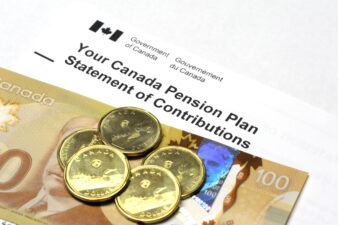So far, the federal government has announced no new taxes for 2020. But if you think that means the Canada Revenue Agency won’t take more of your money, you’re mistaken. A tax hike is just one of many ways your taxes can increase. There’s another, subtler way that your tax bill can rise over time. And it’s set to come in effect in a big way in 2021. In this article, I’ll explore this subtle “tax hike” and how you can offset it.
Bracket creep
Bracket creep is where inflation pushes you into a higher tax bracket, but your purchasing power doesn’t actually increase. This can happen when tax bracket thresholds don’t adjust for inflation. In Canada, the thresholds are supposed to adjust for inflation, but your own budget may not match the basket of CPI goods.
If your employer specifically indexes your salary to inflation, then you’ll get a little bump every year. But that doesn’t mean your purchasing power increases. Most of the time, the effect of a salary bump commensurate with inflation is no real change in purchasing power. It’s a different story if your salary hike pushes you into a higher tax bracket. In that situation, your purchasing power declines because of your increased marginal tax rate.
In 2020, many Canadians’ income increased because of pandemic pay and other benefits. If you’re one of them, then bracket creep may hit you when you file in 2021.
Two different CPP premium hikes
Another factor related to bracket creep is CPP premiums. CPP premiums are a part of your tax bill that will increase every single year until 2023 at least. One reason they will increase is because of CPP enhancement. To help Canadians in the future, the Canada Revenue Agency is taking out increasing CPP premiums from 2019 to 2023. Each annual increase is small, but it adds up to a 16.7% hike over the five years of enhancement.
Then there’s the increase in CPP pensionable earnings. If you earn over $58,700, this will increase your CPP premiums too. Each year, there’s a cap on the percentage of your earnings CPP premiums are assessed on. In 2021, it will be increasing from $58,700 to $61,600. That will result in higher CPP premiums for many Canadians.
The one tax you can counter
Most of the taxes mentioned in this article can’t be countered. You can lower your tax bill by claiming more tax breaks, but you don’t want to trigger a Canada Revenue Agency audit by claiming spurious deductions.
Instead, what you want to do is reduce your overall taxes by holding your investments in a TFSA.
If you hold ETFs like iShares S&P/TSX Capped Composite Index Fund (TSX:XIC), you can shelter all the dividends and capital gains from taxation. This reduces your overall tax rate — assuming you’re going to be holding investments one way or the other.
In 2021, you’ll have $75,500 worth of TFSA contribution space if you’re 29 or older. The annual dividends on a $75,500 XIC position would be about $2,265. In a TFSA, all that’s spared from taxation. Ditto with any capital gains you realize on the ETF. So, holding investments in a TFSA can save you big come tax time — especially if you’re going to be holding investments one way or the other.







